Taro - this crop quickly became a specialty vegetable, with high consumption, bringing high economic efficiency to growers in Nam Dinh province.
According to folk experience, wild water potato shoots (sprouts of wild water potato - wild potato shoots/ wild water potato shoots) are used to cook with bones, snails, crabs, mussels, clams... as a dish that has laxative effects, cools the body, and detoxifies the body during the hot season.
In the past, water taro was mainly used as animal feed because it was very itchy. The taro shoots, the young shoots that sprouted after each rainy season, were picked by growers as a specialty vegetable to eat.
This dish is rustic and healthy but requires elaborate preparation (do not use iron spoons or ladles when cooking this dish, only use bamboo utensils...), takes a long time to prepare... (to avoid causing itching when eating) and is quite special, with an unforgettable aftertaste; some people feel a slight itch in their mouth when eating.
So there is a folk saying "If you eat sweet potatoes, you will feel itchy and uneasy". However, whoever has ever enjoyed this dish will remember it forever!
Therefore, when in the traditional markets there appears a type of big, plump, white taro shoot, introduced by the seller as very sweet taro shoot, not itchy, it is consumed very well.
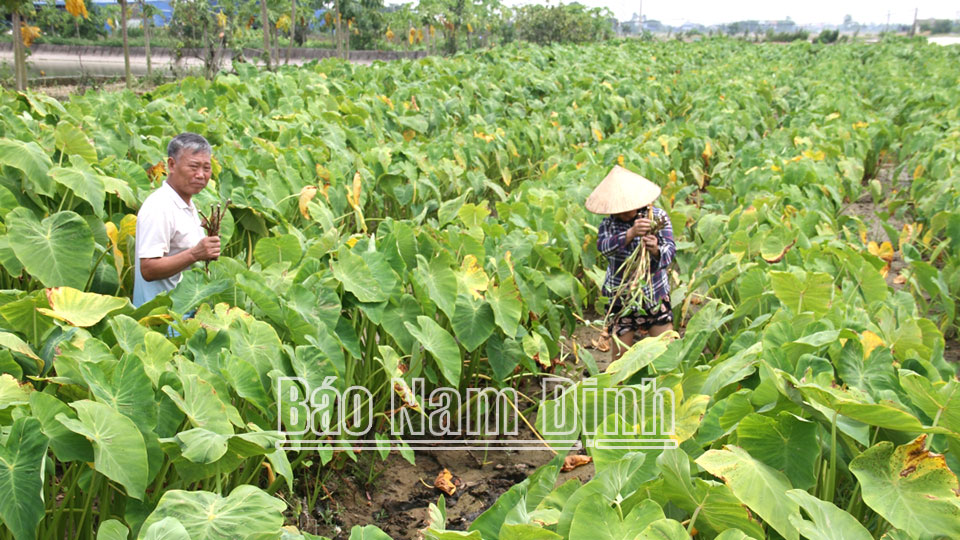
Growing taro shoots to sell as a specialty vegetable on a large scale in hamlet 1, My Ha (My Loc district, Nam Dinh province).
Rural land is gradually urbanized, mixed gardens are renovated, there are not many low-lying gardens left; livestock eat industrial bran so water potatoes are not grown much anymore.
However, many people still remember the taro shoot soup. In the past 2 years, people have exploited the plump, white-green taro shoots, which are sweet, fatty, crumbly and especially not itchy like the wild taro shoots before, so they quickly won the taste of consumers.
Taro shoots are a new crop, originating from Thailand, with tall, large leaves and stems, with characteristics completely similar to taro plants but with the ability to grow and develop more strongly, planted around pond banks, fields, ditches, and troughs, giving better yield and quality shoots.
Initially, many households planted it for the purpose of getting clean vegetables for their family needs. However, with suitable soil and good care, taro plants grow quickly and can be harvested after just over 2 months of planting; taro shoots are used as food, and taro stems and leaves are used for pigs and chickens.
White taro plants have quickly provided a source of clean vegetables and a stable income for many households.
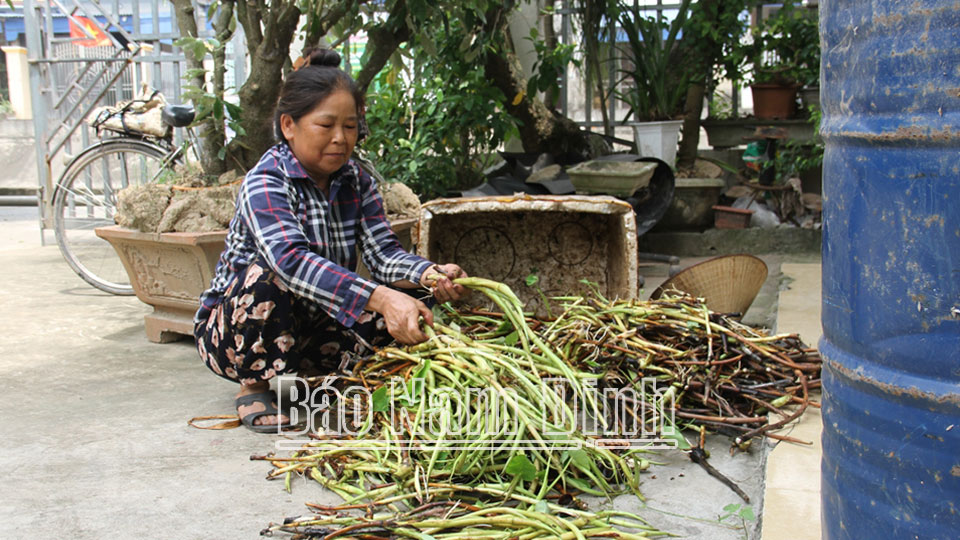
Ms. Tran Thi Thom, a farmer growing taro shoots in hamlet 1, My Ha, My Loc district, Nam Dinh province, prepares taro shoots to supply to the market.
Ms. Tran Thi Thom, Hamlet 1, My Ha (My Loc District, Nam Dinh Province) is one of the quick-witted and dynamic people who quickly expanded the area of white taro cultivation to supply the market.
He said: "White taro is suitable for local soil, grows well and produces products suitable for people's living habits, so it has been planted around home ponds and on abandoned fields in the area, with a total area of over 5 sao.
Because it is a new crop, there is no model to learn from, but luckily we have the internet so my husband and I looked up popular cultivation techniques online to grow it.
Accordingly, the taro fields are fertilized with manure and lime powder is spread on the surface of the beds to prevent pests and golden apple snails from eating the taro sprouts. From the end of July to the Lunar New Year, the taro seeds are planted; the rows are spaced 35cm apart, then covered with straw to keep warm and limit weed growth.
When the taro plants are strong, just make sure to provide enough water for them to grow and develop well. Every 10-15 days, the white taro plants will produce a new crop of shoots. After each harvest, scoop up the mud from the trench and cover the base of the plant, prune the old leaves, and catch worms. Absolutely no pesticides or chemical fertilizers are used.
The process of growing taro shoots is convenient, does not require much cost and care. In particular, white taro plants have good resistance to pests and diseases, after 3 months of planting, the plants can be harvested, the harvest period lasts from 7-8 months/year so my husband and I take care of everything from taking care of the plants to picking shoots and bringing them to the market to sell.
On average, my family harvests 20-30kg of shoots per day, depending on the season, so it brings a stable income for the family."
White taro grown for shoots is a new variety but easy to cultivate intensively, can be utilized on interspersed land areas, low-efficiency rice fields to earn extra income...
Taro shoots can be processed into rustic yet attractive dishes such as stir-fried taro shoots with garlic, pickled taro shoots and taro shoot soup… convenient for people’s daily meals. This vegetable is delicious but not expensive so it is easy to consume.
These are the advantages for this production model to be quickly replicated in some low-lying districts in Nam Dinh province such as Vu Ban, My Loc and Y Yen. This crop is showing that it is possible to develop specialized fields in the direction of effective commodity production.
Source: https://danviet.vn/trong-khoai-mon-tot-um-dan-nam-dinh-loi-be-ngo-non-lam-rau-dac-san-ban-chay-nhu-tom-tuoi-20240816233301958.htm



![[Photo] The 5th Patriotic Emulation Congress of the Central Inspection Commission](https://vphoto.vietnam.vn/thumb/1200x675/vietnam/resource/IMAGE/2025/10/27/1761566862838_ndo_br_1-1858-jpg.webp)


![[Photo] Party Committees of Central Party agencies summarize the implementation of Resolution No. 18-NQ/TW and the direction of the Party Congress](https://vphoto.vietnam.vn/thumb/1200x675/vietnam/resource/IMAGE/2025/10/27/1761545645968_ndo_br_1-jpg.webp)
![[Photo] National Assembly Chairman Tran Thanh Man receives Chairman of the House of Representatives of Uzbekistan Nuriddin Ismoilov](https://vphoto.vietnam.vn/thumb/1200x675/vietnam/resource/IMAGE/2025/10/27/1761542647910_bnd-2610-jpg.webp)
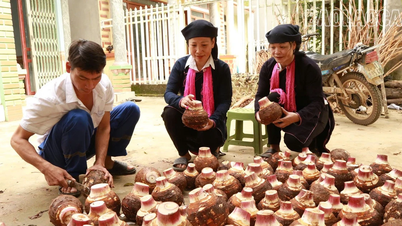







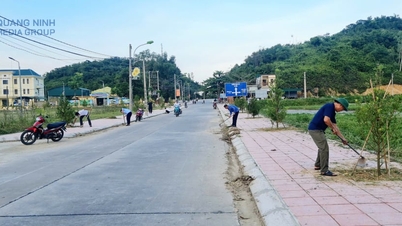


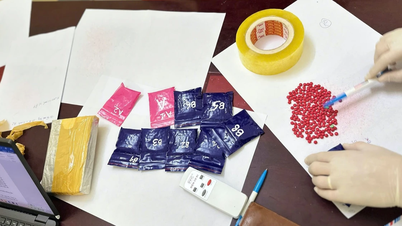
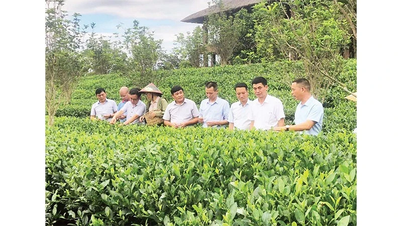
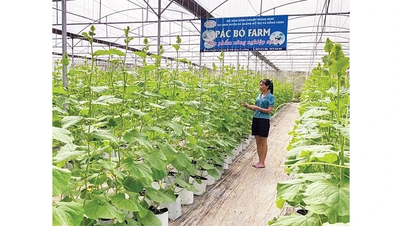
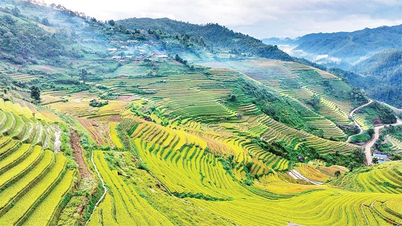
































































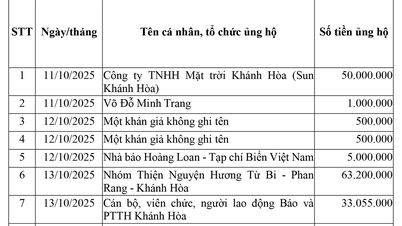
























Comment (0)